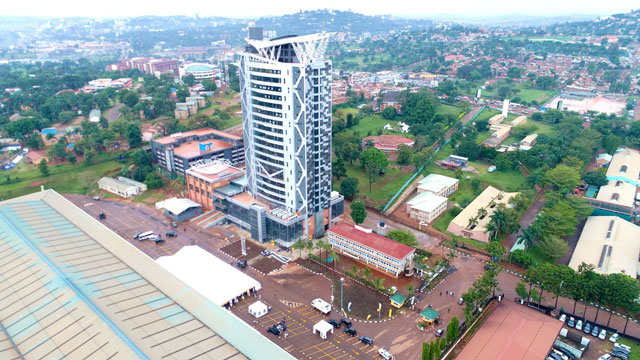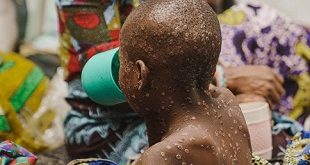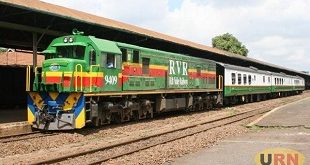
Kampala, Uganda | THE INDEPENDENT | This year as the 2021-22 financial year starts, Uganda Revenue Authority (URA) marks 30 years since its creation, as part of the 1991 reforms which were aimed at improving government revenue collection.
The tax body with Edward Larbi Siaw as the first commissioner general, collected 113 billion Shillings which was 6.83% of GDP then, amounting to 11.2 trillion Shillings.
But much as the revenue collections have since grown many times to 16.4 trillion as of 2018/2019 (and expected to hit 19 trillion this fiscal year), the ratio to GDP has been oscillating between 11 and 13% in the last one decade.
This is also far below Uganda’s regional peers, Kenya and Rwanda whose revenue authorities have managed to collect revenues more than 16% of their respective GDP sizes.
The ratio helps policy makers and lenders to the government to tell whether the revenues being raised from taxes by the country are good enough compared to the size of the economy.
Mr Siaw, the Ghanaian tax expert was credited for a smooth nurturing of the authority that had just been formed from a revenue department under the ministry of finance.
Under the direct supervision of the ministry, it was considered that the tax administration system was suffering from too much powers by the minister, high tax rates and a lot of bureaucracy among others.
In 1997, Siaw was replaced by Elly Rwakakooko, a financial sector expert who had been chairman and managing director of Uganda Commercial Bank, which was later sold to Stanbic.
Under Rwakakooko’s short stint, several measures were made by the government to increase tax revenues through plugging holes to stop smuggling, and introduction of new tax measures.
Under him, the Value Addition Tax was increased from 17 to 18%, while the Income Tax Act was also passed, as well as the self-assessment system for income tax purposes. But his reign is notably remembered for the creation of the Anti-Smuggling Unit -ASU, a paramilitary unit aimed at curbing smuggling.
The unit of military personnel trained by the UPDF was commanded by then Col Kale Kayihura, who was the President’s military assistant.
Reports of brutality against suspected smugglers became more rampant by the day, and the URA started to be seen as a harsh military-run organisation.
Then, Rwakakooko advocated more for tax education, saying the citizenry should not be forced to pay tax and this created a rift between him and Kayihura.
Rwakooko says the behavior of ASU forced him to decline another term in 2000.
He was replaced by Stephen Besweri Akabway, the former chairman of the Electoral Commission in acting capacity until the appointment of a Swedish national, the late Annebritt Aslund in 2001.
To tackle the high levels of corruption that had spilled over from the Rwakakooko reign, the government launched a judicial inquiry into the URA.
The three-month probe led by Justice Julia Sebutinde targeted under-valuation, under-declaration and mis-declaration in customs, collaboration between URA staff and taxpayers, and corruption in motor vehicle licensing among others.
Aslund hoped that the tax-to-GDP ratio of 11.3% would rise immediately to 15% if the probe findings were implemented.
Two years later, the report was submitted to the government, but two of the commissioners disowned it, setting ground for it to be challenged in court on claims that it was unfair to some of the investigated staff.
“In its investigations, the commission found that four companies – Mukwano, Kakira, Grand Imperial and Genesis – owed the authority more than 30 billion or $16.7 million in unpaid taxes,” wrote Justice Geoffrey Kiryabwire.
The report was never published after being quashed.
However, government spokesman Ofwono Opondo says some of the recommendations in the report were implemented and made the authority better.
Indeed, when Allen Kagina took over from Aslund in 2004, the management structure was adjusted from 11 commissioners to five, before the number increased to the current seven.
Kagina was one of the pioneer staff of URA having joined it in 1992 as a senior principal revenue officer.
She is credited with turning around the tax body, improving its financial performance, as well as improving its image before the public. She introduced the periodic media interactions on the revenue collection performances.
Under her, the URA embarked on digitally revolutionalising its operations, introducing 24-hour online services via a web portal, as well as 24-hour services at the border stations of Malaba, Busia and Katuna.
This was followed by the establishment of one-stop border-posts, a regional program supported by Trademark East Africa and the World Bank.
Other digital enhancements included the automation of the processes like introduction of eTax, ASYCUDA World, E-Procurement, Electronic Cargo Tracking System among others.
Reports at the URA and Ministry of Finance show that collections grew over her 10-year tenure averaged at 17% to 8 trillion in 2013/2014 from 2 trillion.
She is so far the longest-serving commissioner general, having ended her two terms in 2014.
Her successor, Doris Akol was not as lucky as her second term was cut short halfway.
Akol, formerly the Commissioner Legal Affairs at URA faced a lot of challenges especially the alleged tax evasion by corporations in the telecoms industry.
President Museveni said that his intelligence had uncovered massive under-declarations by the companies, and some of them were thought to be passing on money to and from money launders.
Akol left when the revenue collections had risen to 16.4 trillion, but she also fell short of the target several times, while the ratio to GDP didn’t go beyond 14%.
She also oversaw the construction of the authority’s current home, the URA Tower.
When she was replaced by John Musinguzi Rujoki, three of her top officials, Dicksons Kateshumbwa, Henry Saka and Silaj Kanyesigye, all commissioners were sacked immediately for abuse of office and corruption. Kateshumbwa immediately stood for Parliament and became a national legislator.
On April 2, Rujoki marked one year at the helm of the authority, with the task of ridding it of corruption and increasing revenue collections to catch up with at least the sub-Saharan African average of 18% of GDP.
*****
URN
 The Independent Uganda: You get the Truth we Pay the Price
The Independent Uganda: You get the Truth we Pay the Price



